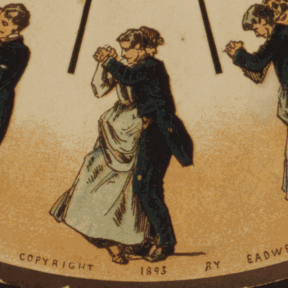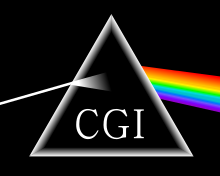The dopamine hypothesis of schizophrenia or the dopamine hypothesis of psychosis is a model that attributes the positive symptoms of schizophrenia to a disturbed and hyperactive dopaminergic signal transduction. The model draws evidence from the observation that a large number of antipsychotics have dopamine-receptor antagonistic
effects. The theory, however, does not posit dopamine overabundance as a
complete explanation for schizophrenia. Rather, the overactivation of
D2 receptors, specifically, is one effect of the global chemical
synaptic dysregulation observed in this disorder.
Introduction
Some researchers have suggested that dopamine systems in the mesolimbic pathway may contribute to the 'positive symptoms' of schizophrenia (whereas problems with dopamine function in the mesocortical pathway may be responsible for the 'negative symptoms', such as avolition and alogia). Abnormal expression, thus distribution of the D2
receptor between these areas and the rest of the brain may also be
implicated in schizophrenia, specifically in the acute phase. A relative
excess of these receptors within the limbic system means Broca's area, which can produce illogical language, has an abnormal connection to Wernicke's area, which comprehends language but does not create it.
Note that variation in distribution is observed within individuals, so
abnormalities of this characteristic likely play a significant role in
all psychological illnesses. Individual alterations are produced by
differences within glutamatergic pathways within the limbic system,
which are also implicated in other psychotic syndromes. Among the
alterations of both synaptic and global structure, the most significant
abnormalities are observed in the uncinate fasciculus and the cingulate cortex.
The combination of these creates a profound dissymmetry of prefrontal
inhibitory signaling, shifted positively towards the dominant side.
Eventually, the cingulate gyrus becomes atrophied towards the anterior, due to long-term depression (LTD) and long-term potentiation (LTP) from the abnormally strong signals transversely across the brain.
This, combined with a relative deficit in GABAergic input to
Wernicke's area, shifts the balance of bilateral communication across
the corpus callosum posteriorly.
Through this mechanism, hemispherical communication becomes highly
shifted towards the left/dominant posterior. As such, spontaneous
language from Broca's can propagate through the limbic system to the
tertiary auditory cortex.
This retrograde signaling to the temporal lobes that results in the
parietal lobes not recognizing it as internal results in the auditory
hallucinations typical of chronic schizophrenia.
In addition, significant cortical grey matter volume reductions
are observed in this disorder. Specifically, the right hemisphere
atrophies more, while both sides show a marked decrease in frontal and
posterior volume.
This indicates that abnormal synaptic plasticity occurs, where certain
feedback loops become so potentiated, others receive little
glutaminergic transmission. This is a direct result of the abnormal
dopaminergic input to the striatum, thus (indirectly) disinhibition of
thalamic activity. The excitatory nature of dopaminergic transmission
means the glutamate hypothesis of schizophrenia is inextricably intertwined with this altered functioning. 5-HT also regulates monoamine neurotransmitters, including dopaminergic transmission. Specifically, the 5-HT2A
receptor regulates cortical input to the basal ganglia and many typical
and atypical antipsychotics are antagonists at this receptor. Several
antipsychotics are also antagonists at the 5-HT2C
receptor, leading to dopamine release in the structures where 5-HT2C is
expressed; striatum, prefrontal cortex, nucleus accumbens, amygdala,
hippocampus (all structures indicated in this disease), and currently
thought to be a reason why antipsychotics with 5HT2C antagonistic
properties improves negative symptoms. More research is needed to explain the exact nature of the altered chemical transmission in this disorder.
Recent evidence on a variety of animal models of psychosis, such as sensitization of animal behaviour by amphetamine, or phencyclidine (PCP, Angel Dust), or excess steroids, or by removing various genes (COMT, DBH, GPRK6, RGS9, RIIbeta),
or making brain lesions in newborn animals, or delivering animals
abnormally by Caesarian section, all induce a marked behavioural
supersensitivity to dopamine and a marked rise in the number of dopamine
D2 receptors in the high-affinity state for dopamine.
This latter work implies that there are multiple genes and neuronal
pathways that can lead to psychosis and that all these multiple
psychosis pathways converge via the high-affinity state of the D2 receptor,
the common target for all antipsychotics, typical or atypical. Combined
with less inhibitory signalling from the thalamus and other basal
ganglic structures, from hyoptrophy the abnormal activation of the cingulate cortex, specifically around Broca's and Wernicke's areas, abnormal D2 agonism can facilitate the self-reinforcing, illogical patterns of language found in such patients.
In schizophrenia, this feedback loop has progressed, which produced
the widespread neural atrophy characteristic of this disease. Patients
on neuroleptic or antipsychotic medication have significantly less
atrophy within these crucial areas.
As such, early medical intervention is crucial in preventing the
advancement of these profound deficits in bilateral communication at the
root of all psychotic disorders. Advanced, chronic schizophrenia can not respond even to clozapine, regarded as the most potent antipsychotic,
as such, a cure for highly advanced schizophrenia is likely impossible
through the use of any modern antipsychotics, so the value of early
intervention cannot be stressed enough.
Discussion
Evidence for the dopamine hypothesis
Amphetamine, cocaine
and similar drugs increase levels of dopamine in the brain and can
cause symptoms which resemble those present in psychosis, particularly
after large doses or prolonged use. This is often referred to as "amphetamine psychosis"
or "cocaine psychosis," but may produce experiences virtually
indistinguishable from the positive symptoms associated with
schizophrenia. Similarly, those treated with dopamine enhancing levodopa for Parkinson's disease
can experience psychotic side effects mimicking the symptoms of
schizophrenia. Up to 75% of patients with schizophrenia have increased
signs and symptoms of their psychosis upon challenge with moderate doses
of methylphenidate or amphetamine
or other dopamine-like compounds, all given at doses at which control
normal volunteers do not have any psychologically disturbing effects.
Some functional neuroimaging
studies have also shown that, after taking amphetamine, patients
diagnosed with schizophrenia show greater levels of dopamine release
(particularly in the striatum)
than non-psychotic individuals. However, the acute effects of dopamine
stimulants include euphoria, alertness and over-confidence; these
symptoms are more reminiscent of mania than schizophrenia. Since the 2000s, several PET studies have confirmed an altered synthesis capacity of dopamine in the nigrostriatal system demonstrating a dopaminergic dysregulation.
A group of drugs called the phenothiazines, including antipsychotics such as chlorpromazine, has been found to antagonize dopamine binding (particularly at receptors known as D2 dopamine receptors)
and reduce positive psychotic symptoms. This observation was
subsequently extended to other antipsychotic drug classes, such as butyrophenones including haloperidol. The link was strengthened by experiments in the 1970s which suggested that the binding affinity of antipsychotic drugs for D2
dopamine receptors seemed to be inversely proportional to their
therapeutic dose. This correlation, suggesting that receptor binding is
causally related to therapeutic potency, was reported by two
laboratories in 1976.
Genetic evidence has suggested that there may be genes,
or specific variants of genes, that code for mechanisms involved in
dopamine function, which may be more prevalent in people experiencing
psychosis or diagnosed with schizophrenia. Dopamine-related genes linked
to psychosis in this way include COMT, DRD4, and AKT1.
People with Schizophrenia appear to have a high rate of self-medication with nicotine; the therapeutic effect likely occurs through dopamine modulation by nicotinic acetylcholine receptors.
However, there was controversy and conflicting findings over whether postmortem findings resulted from drug tolerance
to chronic antipsychotic treatment. Compared to the success of
postmortem studies in finding profound changes of dopamine receptors,
imaging studies using SPET and PET methods in drug naive patients have generally failed to find any difference in dopamine D2
receptor density compared to controls. Comparable findings in
longitudinal studies show: " Particular emphasis is given to
methodological limitations in the existing literature, including lack of
reliability data, clinical heterogeneity among studies, and inadequate
study designs and statistic," suggestions are made for improving future
longitudinal neuroimaging studies of treatment effects in schizophrenia A recent review of imaging studies in schizophrenia shows confidence in the techniques, while discussing such operator error.
In 2007 one report said, "During the last decade, results of brain
imaging studies by use of PET and SPET in schizophrenic patients showed a
clear dysregulation of the dopaminergic system."
Recent findings from meta-analyses suggest that there may be a small elevation in dopamine D2
receptors in drug-free patients with schizophrenia, but the degree of
overlap between patients and controls makes it unlikely that this is
clinically meaningful.
While the review by Laruelle acknowledged more sites were found using
methylspiperone, it discussed the theoretical reasons behind such an
increase (including the monomer-dimer equilibrium) and called for more
work to be done to 'characterise' the differences. In addition, newer
antipsychotic medication (called atypical antipsychotic medication) can be as potent as older medication (called typical antipsychotic medication) while also affecting serotonin
function and having somewhat less of a dopamine blocking effect. In
addition, dopamine pathway dysfunction has not been reliably shown to
correlate with symptom onset or severity. HVA levels correlate trendwise to symptoms severity. During the application of debrisoquin, this correlation becomes significant.
Giving a more precise explanation of this discrepancy in D2 receptor has been attempted by a significant minority. Radioligand imaging measurements involve the monomer and dimer ratio, and the 'cooperativity' model. Cooperativitiy is a chemical function in the study of enzymes.
Dopamine receptors interact with their own kind, or other receptors to
form higher order receptors such as dimers, via the mechanism of
cooperativity. Philip Seeman has said: "In schizophrenia, therefore, the density of [11C] methylspiperone sites rises, reflecting an increase in monomers, while the density of [11C] raclopride sites remains the same, indicating that the total population of D2 monomers and dimers does not change." (In another place Seeman has said methylspiperone possibly binds with dimers)
With this difference in measurement technique in mind, the
above-mentioned meta-analysis uses results from 10 different ligands.
Exaggerated ligand binding results such as SDZ GLC 756 (as used in the
figure) were explained by reference to this monomer-dimer equilibrium.
According to Seeman, "...Numerous postmortem studies have consistently revealed D2 receptors to be elevated in the striata of patients with schizophrenia".
However, the authors were concerned the effect of medication may not
have been fully accounted for. The study introduced an experiment by
Abi-Dargham et al. in which it was shown medication-free live schizophrenics had more D2
receptors involved in the schizophrenic process and more dopamine.
Since then another study has shown such elevated percentages in D2 receptors is brain-wide (using a different ligand, which did not need dopamine depletion). In a 2009 study, Annisa Abi-Dagham et al. confirmed the findings of her previous study regarding increased baseline D2
receptors in schizophrenics and showing a correlation between this
magnitude and the result of amphetamine stimulation experiments.
Some animal models of psychosis are similar to those for addiction – displaying increased locomotor activity.
For those female animals with previous sexual experience, amphetamine
stimulation happens faster than for virgins. There is no study on male
equivalent because the studies are meant to explain why females
experience addiction earlier than males.
Even in 1986 the effect of antipsychotics on receptor measurement was controversial. An article in Science sought to clarify whether the increase was solely due to medication by using drug-naive schizophrenics: "The finding that D2
dopamine receptors are substantially increased in schizophrenic
patients who have never been treated with neuroleptic drugs raises the
possibility that dopamine receptors are involved in the schizophrenic
disease process itself. Alternatively, the increased D2
receptor number may reflect presynaptic factors such as increased
endogenous dopamine levels (16). In either case, our findings support
the hypothesis that dopamine receptor abnormalities are present in
untreated schizophrenic patients." (The experiment used 3-N-[11C]methylspiperone – the same as mentioned by Seeman detects D2 monomers and binding was double that of controls.)
It is still thought that dopamine mesolimbic pathways may be hyperactive, resulting in hyperstimulation of D2 receptors and positive symptoms. There is also growing evidence that, conversely, mesocortical pathway dopamine projections to the prefrontal cortex might be hypoactive (underactive), resulting in hypostimulation of D1
receptors, which may be related to negative symptoms and cognitive
impairment. The overactivity and underactivity in these different
regions may be linked, and may not be due to a primary dysfunction of
dopamine systems but to more general neurodevelopmental issues that
precede them. Increased dopamine sensitivity may be a common final pathway.
Another finding is a six-fold excess of binding sites insensitive to the testing agent, raclopride; Seeman said this increase was probably due to the increase in D2 monomers. Such an increase in monomers may occur via the cooperativity mechanism which is responsible for D2High and D2Low, the supersensitive and lowsensitivity states of the D2 dopamine receptor. More specifically, "an increase in monomers, may be one basis for dopamine supersensitivity".
Evidence against the dopamine hypothesis
Further experiments, conducted as new methods were developed (particularly the ability to use PET
scanning to examine drug action in the brain of living patients)
challenged the view that the amount of dopamine blocking was correlated
with clinical benefit. These studies showed that some patients had over
90% of their D2 receptors blocked by antipsychotic drugs, but
showed little reduction in their psychoses. This primarily occurs in
patients who have had the psychosis for ten to thirty years. At least
90-95% of first-episode patients, however, respond to antipsychotics at
low doses and do so with D2 occupancy of 60-70%. The antipsychotic aripiprazole occupies over 90% of D2 receptors, but this drug is both an agonist and an antagonist at D2 receptors.
Furthermore, although dopamine-inhibiting medications modify
dopamine levels within minutes, the associated improvement in patient
symptoms is usually not visible for at least several days, suggesting
that dopamine may be indirectly responsible for the illness.
Similarly, the second generation of antipsychotic drugs – the atypical antipsychotics) were found to be just as effective as older typical antipsychotics
in controlling psychosis, but more effective in controlling the
negative symptoms, despite the fact that they have lower affinity for
dopamine receptors than for various other neurotransmitter receptors. More recent work, however, has shown that atypical antipsychotic drugs such as clozapine and quetiapine bind and unbind rapidly and repeatedly to the dopamine D2 receptor. All of these drugs exhibit inverse agonistic effects at the 5-HT2A/2C
receptors, meaning serotonin abnormalities are also involved in the
complex constellation of neurologic factors predisposing one to the self
reinforcing language-based psychological deficits found in all forms of
psychosis.
The excitatory neurotransmitter glutamate is now also thought to be associated with schizophrenia. Phencyclidine (also known as PCP or "Angel Dust") and ketamine, both of which block glutamate (NMDA)
receptors, are known to cause psychosis at least somewhat resembling
schizophrenia, further suggesting that psychosis and perhaps
schizophrenia cannot fully be explained in terms of dopamine function,
but may also involve other neurotransmitters.
Similarly, there is now evidence to suggest there may be a number
of functional and structural anomalies in the brains of some people
diagnosed with schizophrenia, such as changes in grey matter density in the frontal and temporal lobes.
It appears, therefore, that there are multiple causes for psychosis and
schizophrenia, including gene mutations and anatomical lesions.
Psychiatrist David Healy
has argued that drug companies have inappropriately promoted the
dopamine hypothesis of schizophrenia as a deliberate and calculated
simplification for the benefit of drug marketing.
Relationship with glutamate
Research has shown the importance of glutamate receptors, specifically N-methyl-D-aspartate receptors
(NMDARs), in addition to dopamine in the etiology of schizophrenia.
Mice with only 5% of the normal levels of NMDAR's expressed
schizophrenic like behaviors seen in animal models of schizophrenia
while mice with 100% of NMDAR's behaved normally. Schizophrenic behavior
in low NMDAR mice has been effectively treated with antipsychotics that
lower dopamine.
NMDAR's and dopamine receptors in the prefrontal cortex are associated
with the cognitive impairments and working memory deficits commonly
seen in schizophrenia. Rats that have been given a NMDAR antagonist
exhibit a significant decrease in performance on cognitive tasks. Rats
given a dopamine antagonist (antipsychotic) experience a reversal of the
negative effects of the NMDAR antagonist.
Glutamate imbalances appear to cause abnormal functioning in dopamine.
When levels of glutamate are low dopamine is overactive and results in
the expression schizophrenic symptoms.
Criticisms
Dr Ronald Pies, the current editor in Chief Emeritus of Psychiatric Times
with a circulation of about 50,000 psychiatrists monthly, wrote on July
11, 2011 " In truth, the “chemical imbalance” notion was always a kind
of urban legend- - never a theory seriously propounded by well-informed
psychiatrists."
Combined networks of dopamine, serotonin, and glutamate
PsychopharmacologistStephen M. Stahl
suggested in a review of 2018 that in many cases of psychosis,
including schizophrenia, three interconnected networks based on
dopamine, serotonin, and glutamate - each on its own or in various
combinations - contributed to an overexcitation of dopamine D2 receptors
in the ventral striatum.







